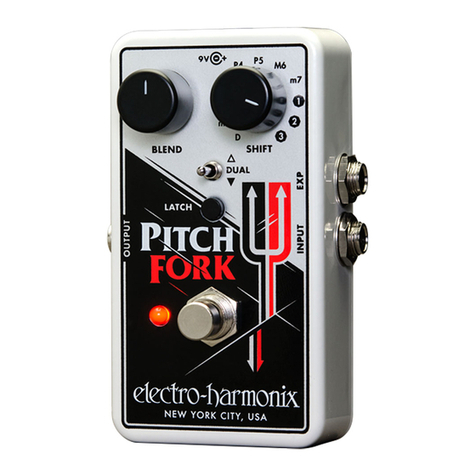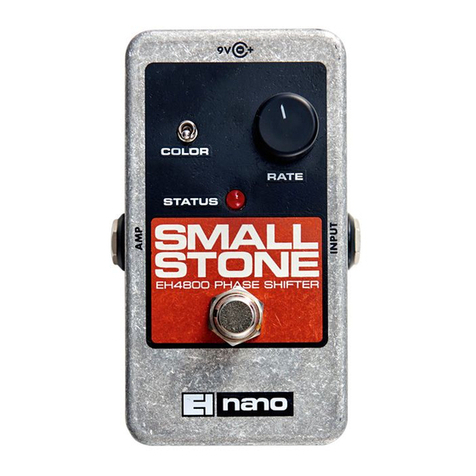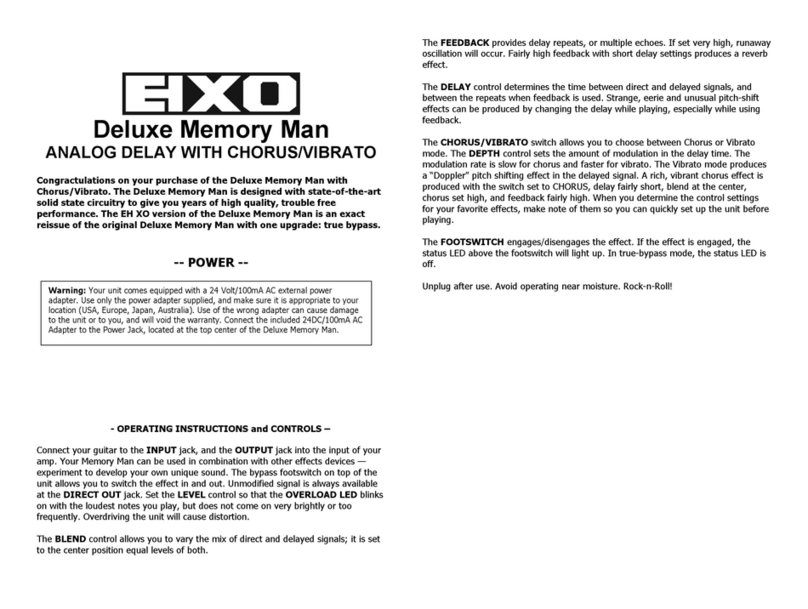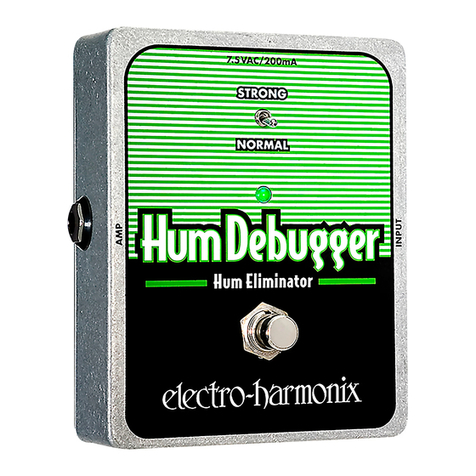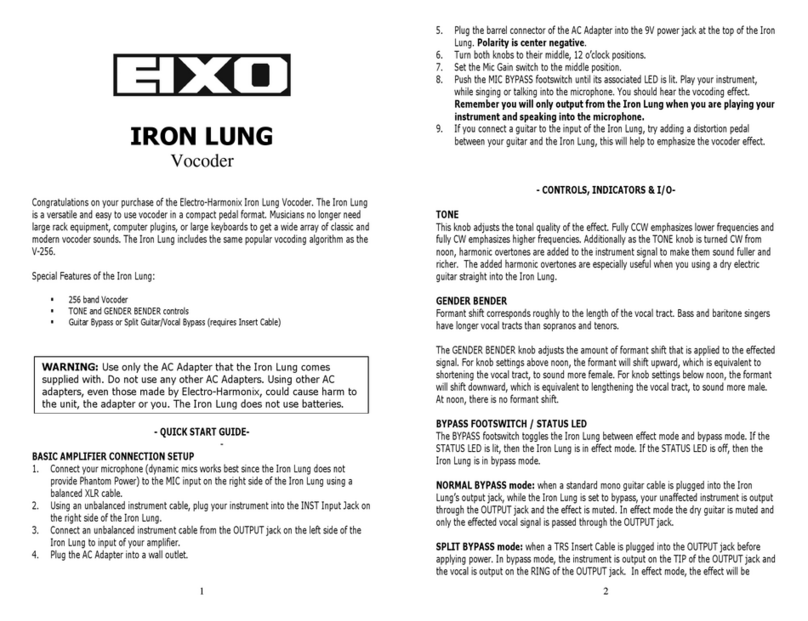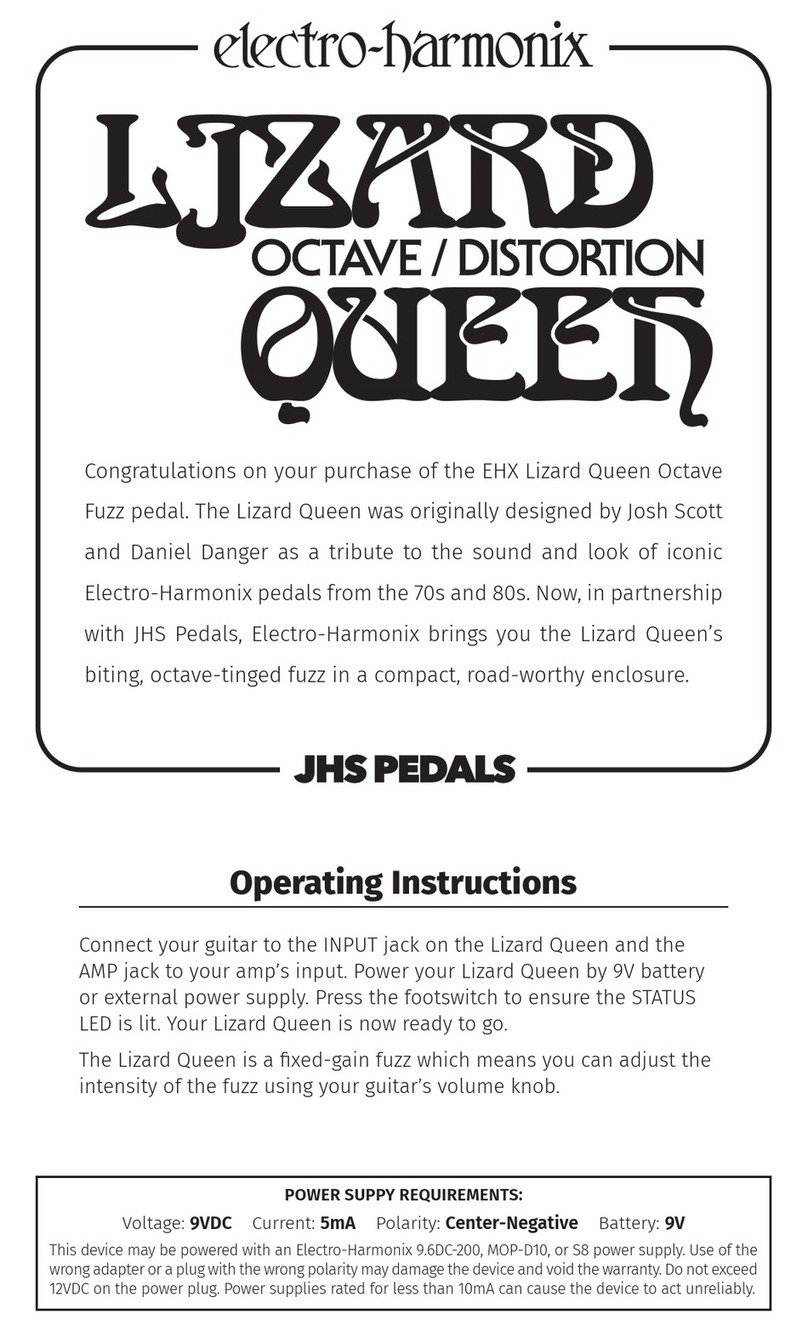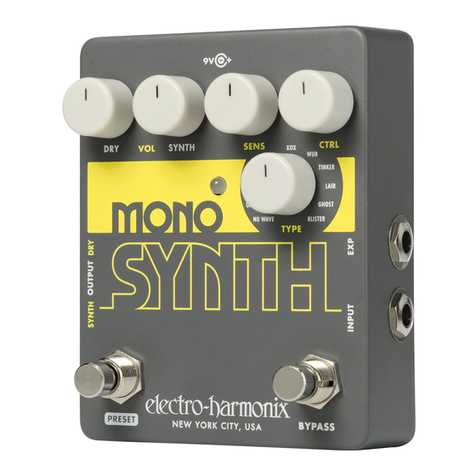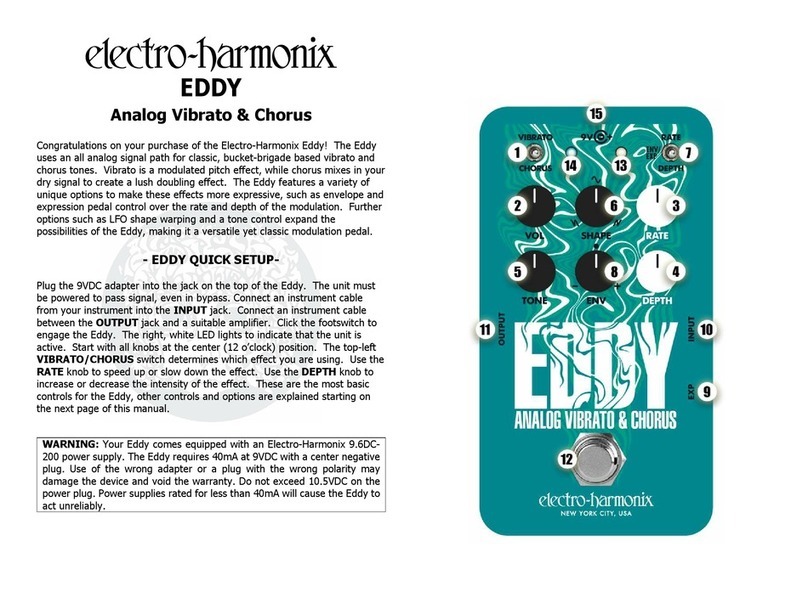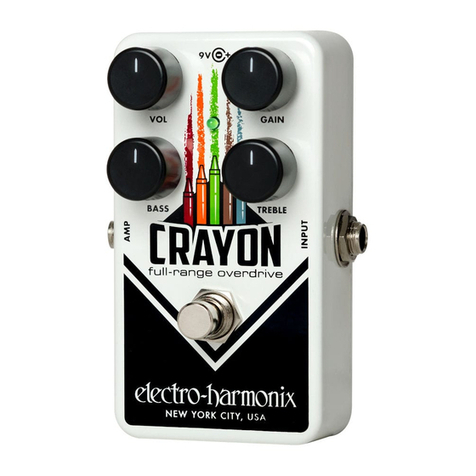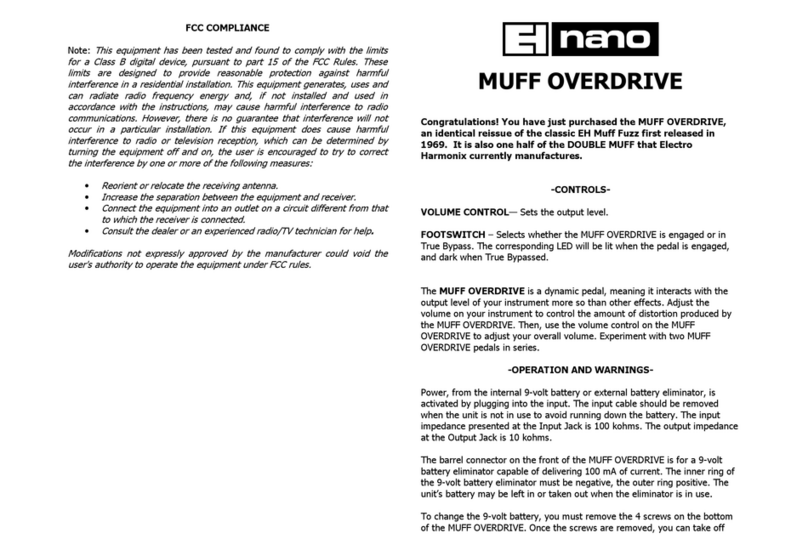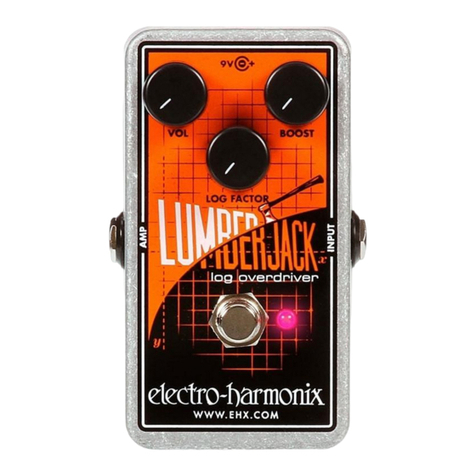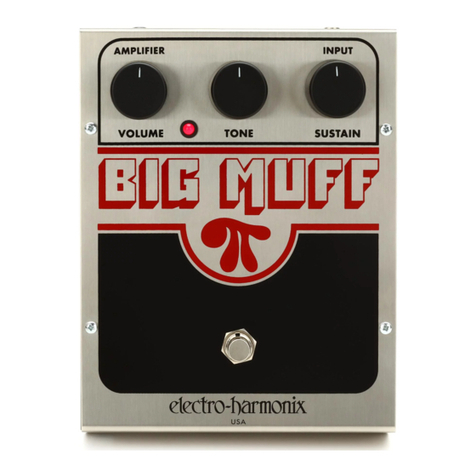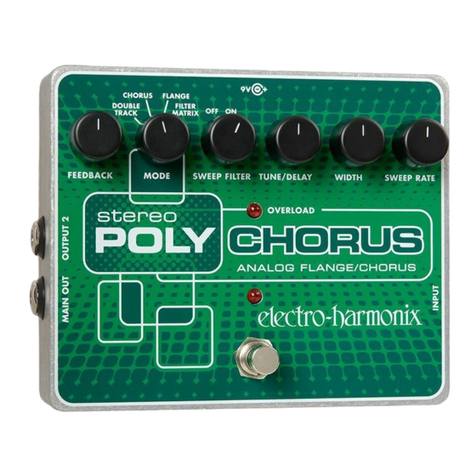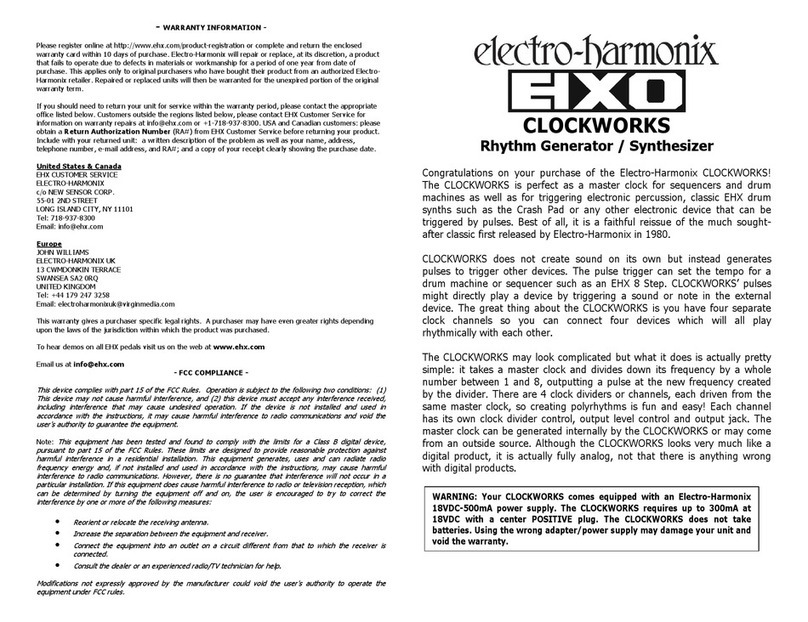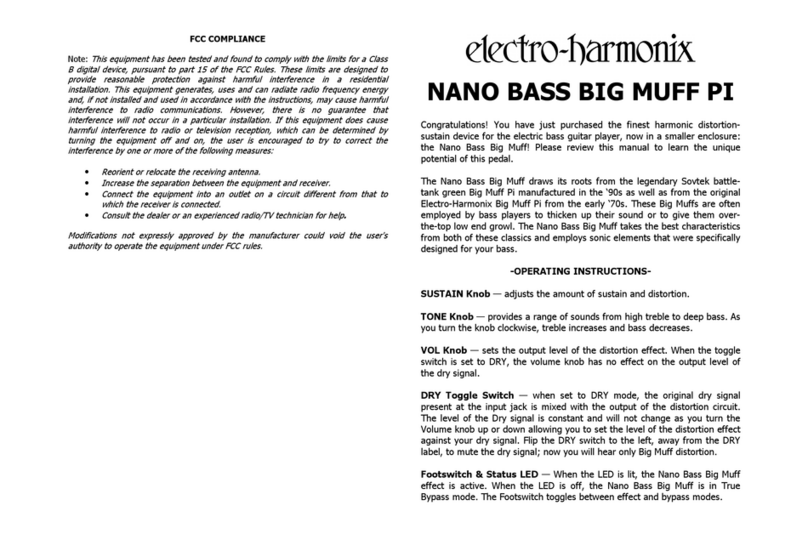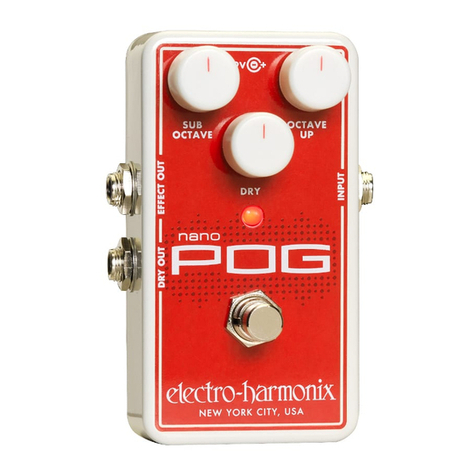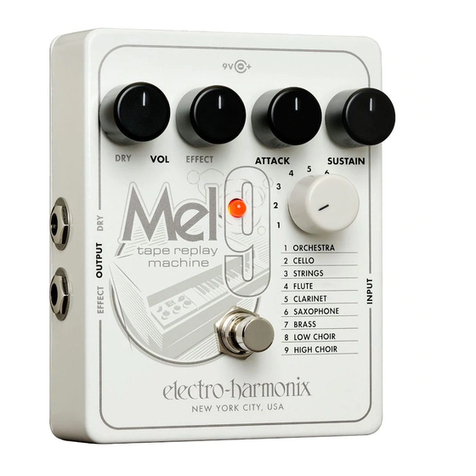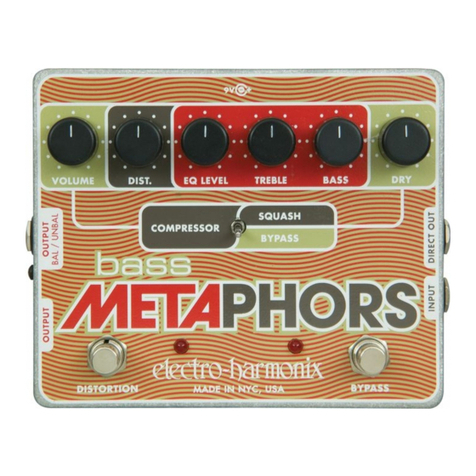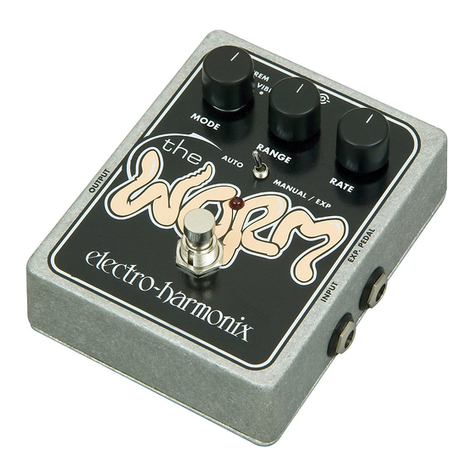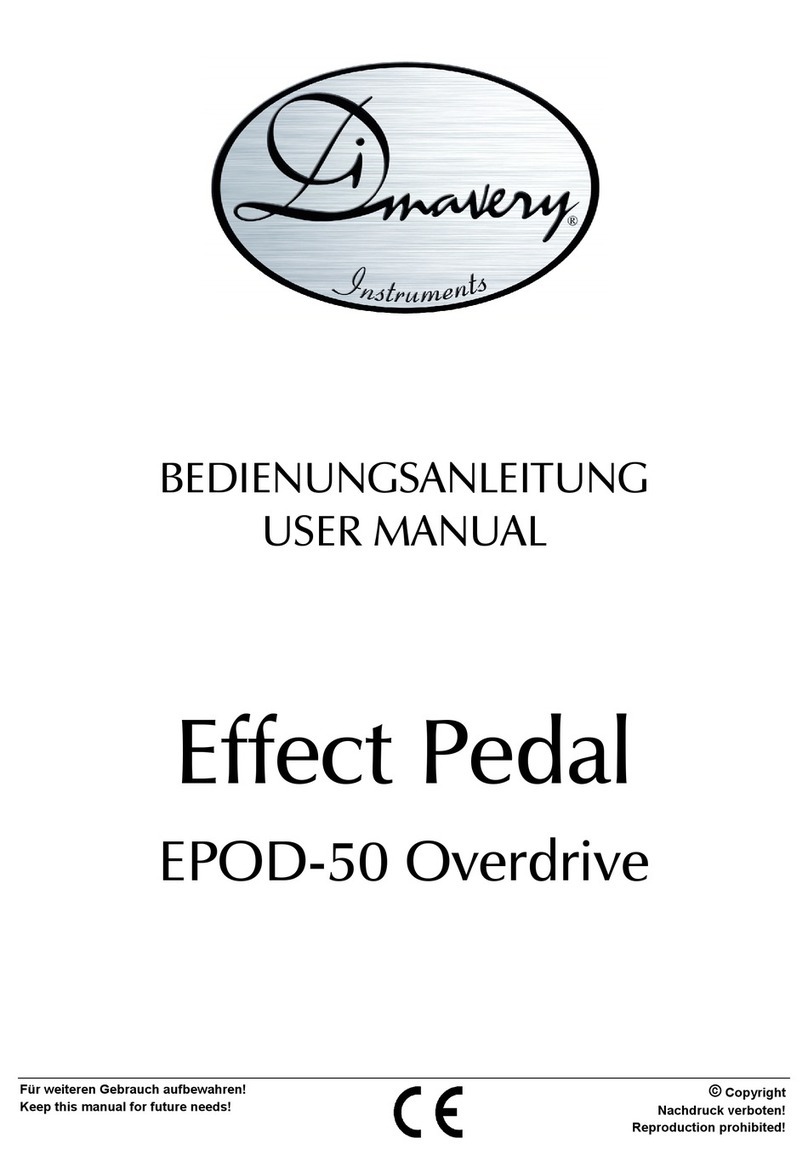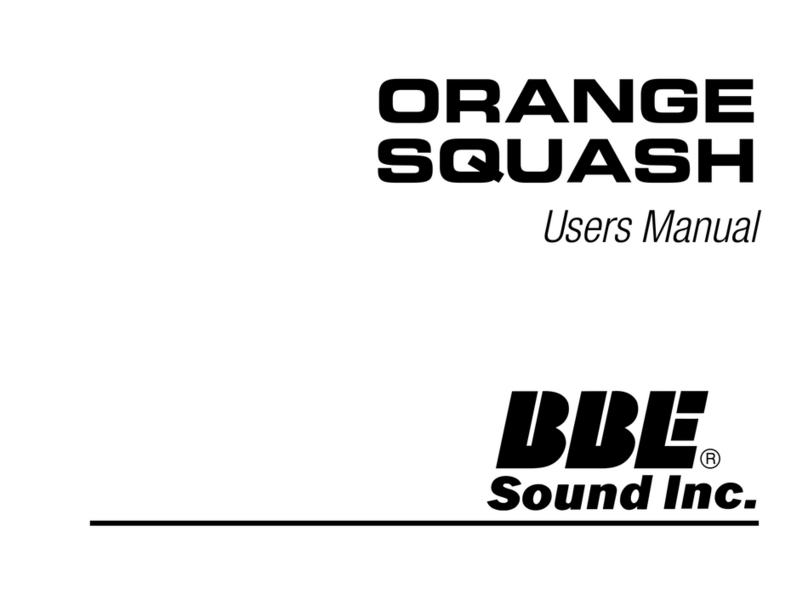
RIDDLE: Q BALLS
FOR GUITAR
Congratulations on your purchase of the Riddle: Q-Balls envelope
controlled filter for guitar! This is a very powerful tool for musical
expression that opens a new horizon of sonic potential for your
guitar. Please take a few minutes to familiarize yourself with the
Riddle’s controls and how they work.
Envelope controlled filters are a unique type of sound modifier
where the intensity of the effect is controlled by the user’s playing
dynamics. The volume and dynamic of the incoming audio signal is
used to control a swept filter. As the volume increases or decreases
so does the frequency of the filter.
With 3 selectable filter modes, along with START, STOP, ATTACK,
DECAY, Q and SENSITIVITY controls, all of the classic Q sounds are
available to the user. Also, many new sounds and vivid textures
can be achieved like never before. A new analog distortion circuit
was created specifically for the RIDDLE, and adds a dynamic edge
to the filters sound. With the addition of an expression pedal input
(expression pedal not included), the RIDDLE provides manual
control of the filter sweep.
— POWER —
— CONTROLS —
BLEND – Controls the output mix of the dry and effected signal. Fully CCW is
100% dry with no effect added. Fully CW is 100% wet with no remaining dry
signal.
MODE – This is a rotary switch used to select between the 3 filter modes available
on the RIDDLE. Select between LP (low pass), BP (band pass), and HP (high pass)
modes to emphasize a different frequency band. Selecting between these modes
does not change the start and stop frequencies.
ATTACK – This knob controls how quickly the filter will sweep from the frequency
set by the “START” knob to the frequency set by the “STOP” knob. Fully CCW
will have the fastest attack setting and is good for quick percussive styles of playing.
Fully CW will have the slowest attack setting and creates a slower smoother sweep
for a bowed sound.
DECAY – This knob controls how sensitive the reset circuit is when falling back
from the “STOP” setting to the “START” setting. Fully CCW will have the most
sensitive reset. In this setting the sweep will reset the fastest and the easiest. Use
this when playing quick staccato notes to make sure every note triggers a new
envelope sweep. Fully CW will maximize the decay setting. Use a longer decay
setting when you don’t want every note to reset.
START – This knob sets the frequency that the sweep starts at. Fully CCW is the
lowest frequency (about 80Hz). Fully CW is the highest setting (about 5Khz). Use
this knob along with the “STOP” knob to set the range and direction of the sweep.
For example, a low “START” and a high “STOP” will sweep upward. A high
“START” and a low “STOP” will sweep downward.
STOP – This knob sets the frequency that the filter sweeps to. Fully CCW is the
lowest setting (about 80Hz). Fully CW is the highest setting (about 5KHz).
Q – This knob controls the resonance of the Q. Fully CCW is the widest bandwidth
and fully CW is the most resonant for a more dramatic effect.
SENSITIVITY – This knob controls the input sensitivity of the envelope filter
circuit. Fully CCW is the least sensitive, and the circuit will be less reactive to the
instrument input. Fully CW is the most sensitive and the circuit will be the most
reactive to the instrument input.
A NOTE ON INTERACTIVE CONTROLS:
The “ATTACK”, “DECAY”, “START”, “STOP” and “SENSITIVITY” knob are
highly interactive. If Attack is set to slow, the Decay is set to fast, or the Sensitivity
is set to low, the filter sweep may not reach the stop frequency. The lowest
frequency sweeps in the RIDDLE can be difficult to hear. If this causes the attack to
WARNING:
Use only the
AC Adapter that the RIDDLE comes supplied with.
Do
not use any other AC Adapters. Using other AC adapters, even those made by
Electro-Harmonix, could cause harm to the unit, the adapter or you. The
RIDDLE does not use batteries.

